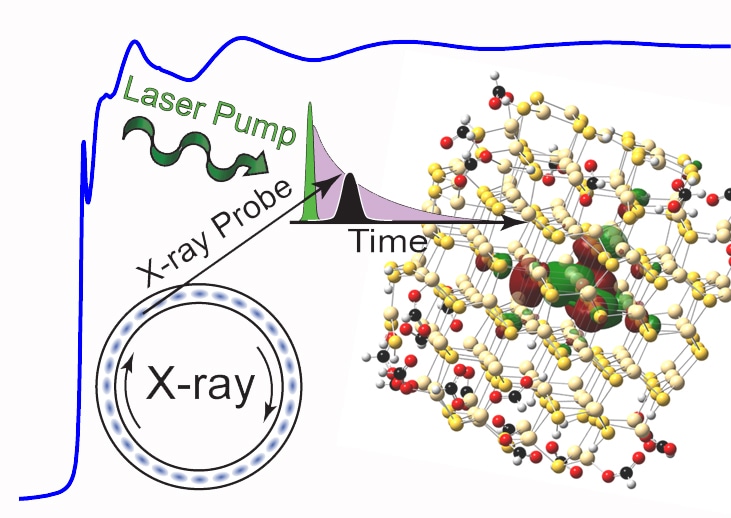Sep 6 2017
Another reason why semiconductors seem to lose their potential to carry a charge as they become more densely “doped” has been uncovered by Researchers examining the flow of electricity. Their findings, which could help Engineers design faster semiconductors in the future, have been published online in the journal ACS Nano.
 The atomic structure of a tiny semiconductor is X-rayed. Credit: UIC
The atomic structure of a tiny semiconductor is X-rayed. Credit: UIC
Semiconductors are detected in almost every piece of modern electronics, from televisions and computers to cell phones. They fall somewhere between metals, which conduct electricity extremely well, and insulators like glass that do not conduct electricity at all. This moderate conduction property is responsible for allowing semiconductors to act as transistors and switches in electronics.
Silicon, mined from the earth and then refined and purified, is the most common material for semiconductors. However, pure silicon does not conduct electricity, hence the material is purposely and precisely adulterated by the addition of other substances known as dopants. Silicon-based semiconductors are allowed to conduct electricity by the addition of boron and phosphorus ions that are common dopants.
However, the amount of dopant added to a semiconductor is important since very little dopant and the semiconductor will not be able to conduct electricity. The semiconductor and excessive dopant will become more like a non-conductive insulator.
There’s a sweet spot when it comes to doping where the right amount allows for the efficient conduction of electricity, but after a certain point, adding more dopants slows down the flow. For a long time scientists thought that the reason efficient conduction of electricity dropped off with the addition of more dopants was because these dopants caused the flowing electrons to be deflected away, but we found that there’s also another way too many dopants impede the flow of electricity.
Preston Snee, Corresponding Author and Associate Professor of Chemistry, the University of Illinois at Chicago
Snee, Asra Hassan (UIC Chemistry Student) and their colleagues wanted to get a closer look at what takes place when electricity passes via a semiconductor. They used small chips of cadmium sulfide for their semiconductor “base” and then doped them with copper ions. Instead of wiring the small chips for electricity, they produced a flow of electrons via the semiconductors by shooting them with a powerful blue laser beam. Simultaneously, they took extremely high energy X-ray photos of the semiconductors at millionths of a microsecond apart – which demonstrated what was happening at the atomic level in real time as electrons traveled through the doped semiconductors.
They discovered that when electrons were flowing through, the copper ions quickly formed bonds with the cadmium sulfate semiconductor base, which is harmful to conduction.
This has never been seen before. Electrons are still bouncing off dopants, which we knew already, but we now know of this other process that contributes to impeding flow of electricity in over-doped semiconductors.
Asra Hassan, Chemistry Student, UIC
The bonding of the dopant ions to the semiconductor base material, “causes the current to get stuck at the dopants, which we don’t want in our electronics, especially if we want them to be fast and efficient,” she said. “However, now that we know this is happening inside the material, we can design smarter systems that minimize this effect, which we call ‘charge carrier modulation of dopant bonding’.”
Co-authors on the paper include Xiaohan Liu, Ali Jawaid, Ahmet Gulec, Robert Klie and Armen Shamirian of UIC; Xiaoyi Zhang, Soma Chattopadhyay, Xiaobing Zuo of Argonne National Laboratory and Clare Rowland and Richard Schaller of Northwestern University.
UIC supported this research. The U.S. Department of Energy and the MRCAT member institutions supported the Advanced Photon Source. The U.S. Department of Energy Office of Basic Energy Sciences under contract DE-QC02-06CH11357 supported the use of the Advanced Photon Source.